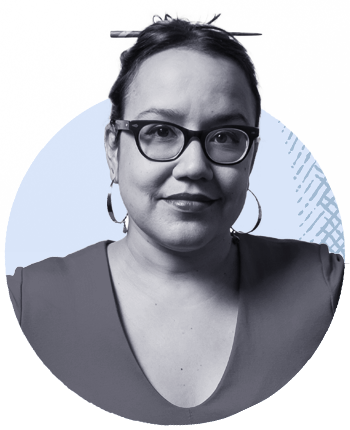Everything You Need to Know About High-Yield CDs

If you have money sitting in a savings or checking account and want to make it work harder, consider high-yield or jumbo CDs. These certificates of deposit are insured by the Federal Deposit Insurance Corporation (FDIC) for up to $250,000. Thanks to recent series of interest rate raises from the Federal Reserve, they've begun to offer APY rates as high as 5.00%.
Table of Contents
- What is a high-yield CD?
- How do high-yield CDs Work?
- Advantages of high-yield CDs
- Drawbacks of high-yield CDs
- How to choose the Best high-yield CD?
- Tips for investing in high-yield CDs
- Are high-yield CDs safe?
- High-yield CD FAQs
What is a High-Yield CD?
A high-yield CD is a certificate of deposit, or CD, with a higher interest rate than an ordinary savings account or traditional CD. Banks and credit unions offer CDs with fixed terms ranging from a few months to five years (or even longer). The longer the term, the greater the return — as long as you don't need access to your cash. Online banks offer many CDs with the best rates, which have less overhead costs and can pass the savings on to customers in the form of higher APYs.
Typically, high-yield CDs have terms of close to one year or longer, with most banks and credit unions offering terms of up to five years. Interest rates on CDs can vary widely, depending on the bank and your deposit amount. Generally, higher-yield CDs require your money to be locked in the account for a longer period of time.
Like traditional CDs and bank accounts, the FDIC insures high-yield CDs up to $250,000 per depositor.
What's the difference between a Jumbo CD and a High-Yield CD?
Whether you ask, "What is a jumbo CD?" or "What is a high-yield CD?" you're essentially asking similar questions. (In fact, some lenders use the two terms interchangeably.) "High-yield" refers to the interest you earn, while "jumbo" refers to the amount you invest to earn that rate.
How do High-Yield CDs Work?
High-yield CDs work much like any other certificate of deposit. You make an initial deposit, and then the bank or credit union pays you a fixed interest rate for a set time. When the CD matures, you can withdraw your money plus any earned interest. However, if you withdraw your funds before the end of the term, you'll typically have to pay a penalty. The interest that accrues on a high-yield CD is compounding, meaning you'll earn interest on the accumulated interest.
Banks design high-yield CDs to offer more significant returns than high-yield savings accounts or standard CDs with similar terms, but they often require a larger minimum deposit. Generally, the longer the term of the CD, the higher the interest rate you can expect to receive.
Your interest rate is typically locked in for the duration of your term, but you'll want to check with your institution to see if they offer "bump-up" rates or other specials that allow you to increase your earning potential throughout the term. The higher rate of return that the best CD rates offer makes them an attractive option for people who have more to invest, or who are looking for higher returns on their savings.
Interest rates for high-yield CDs
The rates offered on high-yield CDs depend on the term length, deposit amount, and the general interest rate environment. Whenever the Federal Reserve raises or lowers rates, CD rates typically follow suit. Although the rates for CDs had averaged below 1% in recent years, they have seen a sharp increase since the Federal Reserve began raising interest rates in March 2022.
As of April 2023, the national average interest rate for savings accounts in the US is close to 0.39% APY while the current average interest rate on a one-year CD is around 1.54% APY, as per the FDIC. That's more than three times the return you'd get on a savings account.
However, these are only averages — some institutions offer much higher rates on CDs. The highest rates on one-year CDs are currently topping out at around 5.00% APY, while the returns on longer-term CDs (three to five years) can reach as high as 4.50%. The longer-term APYs are currently lower than one-year CDs due to the expectation that the Federal Reserve will lower interest rates at some point during the term.
Advantages of High-Yield CDs
Easy to open and manage
High-yield CDs are easy to open and manage. You can typically open one with just a few clicks online, and many banks and credit unions allow you to manage your account through their websites and mobile apps.
Low risk
The FDIC insures high-yield CDs for up to $250,000 per account holder. This allows you to enjoy returns on your deposit without worrying about losing your money due to market volatility or failing banks.
Guaranteed returns
Unlike many other investments, high-yield CDs offer a guaranteed rate of return. This means you can count on a set amount of interest income from your CD regardless of what happens in the markets or the economy.
Diversification
High-yield CDs can be part of a more extensive portfolio to diversify your investments and lower overall risk. By investing in a range of different assets, you can reduce the chance that poor performance in one asset will significantly impact your overall returns.
Drawbacks of High-Yield CDs
Early withdrawal penalties
Withdrawing your funds from a high-yield CD before the end of its term usually results in a hefty early withdrawal penalty. This might lead to you forfeiting some or all of the accrued interest you would otherwise acquire had you kept the CD in place until its maturity date.
Inflation risk
Although high-yield CDs offer a guaranteed return, the rate of return may not always be enough to keep up with inflation. If the inflation rate is higher than the interest rate on your CD, you may lose purchasing power over the long term.
Limited upside potential
The highest rates offered on high-yield CDs can still be lower than the returns offered by some other investments, such as stocks and real estate. This can limit your upside potential (meaning, the amount at which the price of a security is expected to increase) and make achieving significant returns on your investment challenging.
Opportunity costs
One of the major drawbacks to high-yield CDs is their opportunity cost (or, the loss of potential gains had you chosen another investment vehicle, such as stocks or real estate). CDs lock up your funds for the term. If you're looking for stable returns but also require access to your funds, consider some of the best high-yield savings accounts or money market accounts. These allow you to withdraw your funds at any time without penalty, but the rates of return are often lower than those offered on high-yield CDs.
How to choose the Best High-Yield CD
When selecting a high-yield CD, there are several aspects you should consider carefully.
First, assess the term length — do you prefer a short-term investment (one year or less) or a longer commitment (two years and above)? Your choice should accurately reflect your personal financial goals and the duration of time you’re willing to wait for the return on your investment.
Another critical factor to consider is the offered rate. You should always compare a variety of CDs offered by different financial institutions. Doing so will ensure you're getting the best return on your money and enjoying the best CD interest rates. Don't forget to also read the fine print and understand any fees or other conditions associated with the CD.
Finally, evaluate your financial aspirations and risk appetite. High-yield CDs are typically low-risk investments, so they may not be a great fit for those hunting for higher returns. However, if you're searching for a secure place to safeguard your funds while earning a guaranteed return on investment, then high-yield CDs may be the right choice.
Tips for Investing in High-Yield CDs
The following tips can help you maximize the returns from your high-yield CD:
- Choose a CD with a minimum within your budget, as these can vary significantly. Make sure you choose a minimum deposit amount you're comfortable with.
- Compare CDs from different institutions: This is essential to ensure you get the best rate.
- Consider the terms and conditions: Read the fine print and understand any fees or other conditions associated with the CD. This can range from early withdrawal penalties to renewals at the end of the term.
- Laddering your CDs can help you maximize returns and maintain access to your money by investing in CDs with different maturity dates.
- Choose the right type of CD. For example, bump-up CDs allow you to take advantage of higher rates if they become available, while no-penalty CDs allow for early withdrawals without any penalties. For some, the tax benefits of an IRA CD may also be attractive. Each type of CD has its pros and cons, so make sure you fully understand the terms before investing.
- Remember that investing in high-yield CDs is a long-term strategy. The idea is to benefit from compounding interest over time while minimizing the effects of inflation.
Are High-Yield CDs safe?
CDs have always been viewed as a benchmark investing product for risk-averse savers who want to grow their money without exposing their nest egg to the stock market's volatility. CDs — regular and jumbo — are insured for up to $250,000 by the FDIC, or the Credit Union National Association if your CD is through a credit union.
One detail to know, though: Banking institutions often apply that FDIC cap to the total amount you invested. In other words, if you were to open three $100,000 jumbo CDs at the same bank and that bank subsequently failed, you might only be reimbursed for $250,000, even though each CD was for well below that amount. If you have more than a quarter-million dollars you're considering putting into jumbo CDs, consider opening accounts at different institutions.
High-Yield CD FAQs
How long are CD terms?
Opting for shorter-term CD investments (three to six months) is an excellent way to save up for upcoming expenditures, such as a new car or home renovations. Many people use mid-length CDs (12 months to 18 months) when laying aside funds for something a bit further out, such as a down payment for a house or the birth of a child. Longer-term CDs are the ideal choice for those with extended financial goals and the ability to commit to the principal for an extended period of time.
How much money do you need for a jumbo CD?
What is the highest-yield CD?
Due to the unusual state of the economy and rising interest rates during late 2022 and early 2023, one-year CDs are currently offering some of the highest rates, with APYs over 5.00%. (One note: APY, or annual percentage yield, is similar to APR, or annual percentage rate, which refers to what you pay when you borrow money. However, APY factors in compound interest.)
In an interesting twist, longer-term CDs are actually paying lower interest rates than one-year CDs. Many multi-year CDs currently offer APYs that range between 4.30% and 4.75%. Considering the time involved and the potential for interest rates to fall in the future, these longer-term CDs have become an attractive option for those looking for a relatively safe place to park their money.
Generally, large national banks don't offer these high CD interest rates. Instead, you're more likely to find attractive rates at community banks, online banks and credit unions. These institutions often run short-term specials to increase their liquidity.
Can I cash in a CD early?
Do CDs charge fees?
Harris says that if you're worried about losing access to your money, you can employ a strategy called "laddering." This involves splitting your investable savings into a series of smaller CDs with staggered maturity rates. If you set these CDs to mature on a monthly or bimonthly basis, you're never more than a month or two away from being able to tap a portion of your cash without paying a penalty.

